A recent study, published in Proceedings of the National Academy of Sciences (PNAS), has quantified the unrealized potential of land-based carbon storage. A series of maps shows that both plants and soils have the potential to store 287 billion metric tons more across the globe— more than the current annual emissions of the European Union.
“From forests to soils, terrestrial ecosystems store enormous amounts of carbon globally, and are capable of storing even more,” said Dr. Wayne Walker, Carbon Program Director at Woodwell Climate Research Center and study lead author. “But realizing the untapped potential of land to aid in addressing the climate crisis means understanding how much storage space is available, where in the world that space is located, and what actions can be taken in those places to take advantage of the opportunity they offer as rapidly as possible. This study provides the data and conceptual framework for doing that.”
These findings reveal the significant potential for expanding land-based carbon capture globally through protection, restoration, and improved management of forests and other woody systems. Improved management of existing forests alone may offer more than 75% of the untapped potential, with the vast majority (71%) of it concentrated in tropical ecosystems.
“Forest stewardship represents the greatest opportunity for realizing carbon removal and storage in the near term, and the urgency of the climate crisis demands that we prioritize these efforts,” said Peter Ellis, Director of Natural Climate Solutions Science at The Nature Conservancy and study co-author. “Our research shows that after safeguarding lands required for food production and human habitation, improved management of forests and other woody systems — particularly degraded forests across the global tropics — offers tremendous climate mitigation potential.”
The study is timely, coming on the heels of the Intergovernmental Panel on Climate Change (IPCC)’s Working Group III’s latest report, which focuses on the urgent need to reduce carbon emissions in order to limit future warming, and highlights the significant mitigation potential of natural and managed ecosystems given the opportunity they offer to remove additional carbon from the atmosphere. While study results point to the significant opportunity that land offers as a natural climate solution based on what we know now, this work cannot stop there. Future research should build off these findings to support development of policies that take full advantage of the available land-based carbon sink.
“We anticipate these findings will prove valuable for many countries, since natural climate solutions figure heavily in delivering Paris Agreement commitments in most countries. However, these results must be combined with a range of other information to prioritize and effectively implement natural climate solutions.” said Bronson Griscom, Senior Director of Natural Climate Solutions at Conservation International.
The feasibility of land-based carbon mitigation in 4 graphics
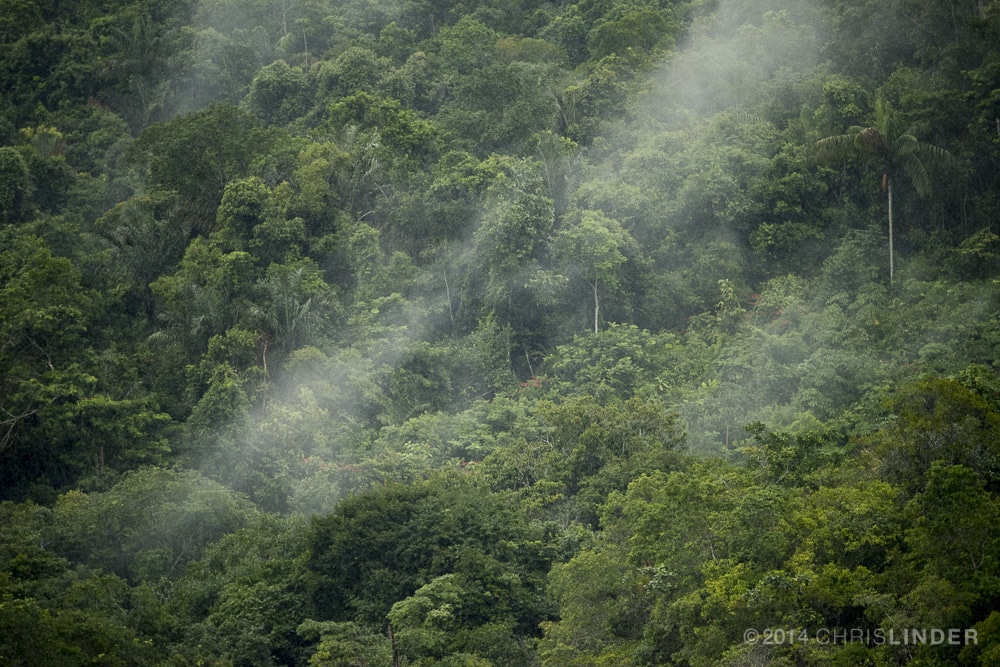
The importance of natural climate solutions came to the forefront of climate talks in Glasgow last week as decision makers discussed the “how” of making good on emissions pledges.
One of the most powerful existing solutions we can deploy are land-based mitigation strategies, also known as natural climate solutions. Forest protection and restoration, agroforestry, and other changes to the way we manage land can boost the amount of carbon ecosystems pull from the atmosphere and could help tackle 20-30 percent of the emissions reductions needed to limit warming to 1.5 degrees C. These graphics, based on a recent study in Global Change Biology, break down the potential and feasibility of land-based carbon mitigation.
Cost-effective mitigation is only 40% of the total technical potential

Although there is great potential in land-based mitigation globally, some actions will be cheaper and easier to implement. Roughly 40 percent of the total carbon mitigation potential of land-based strategies can be considered cost-effective, with estimated price tags up to $100 per ton of carbon sequestered. On a global scale, actions like reducing deforestation or improving carbon sequestration on grasslands are incredibly cost effective. Shifting to healthier, more plant-based diets is another, individual, action that can have big impacts.
Agricultural mitigation is as important as forest protection in the Northern Hemisphere
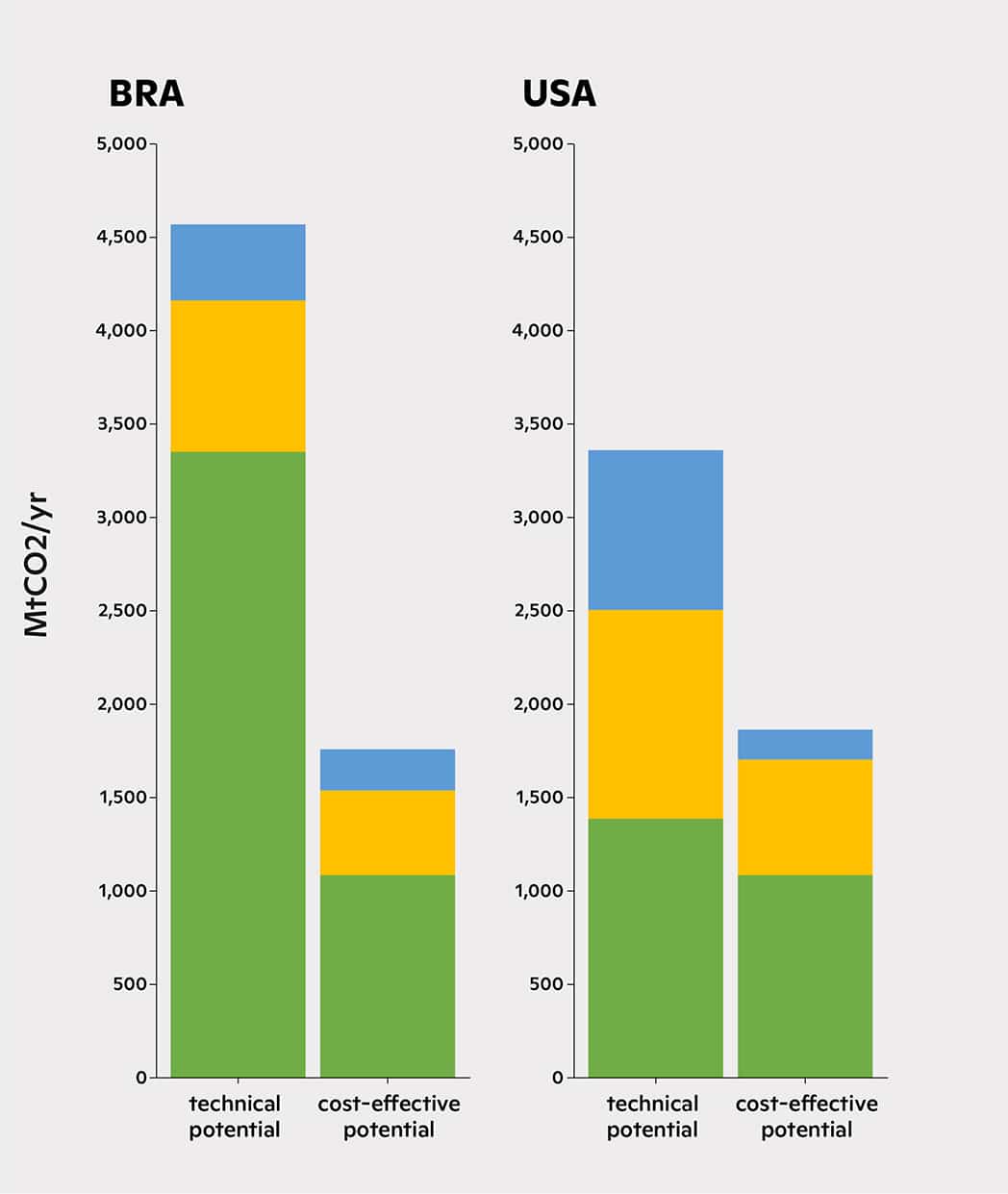
On a regional level, the value of different actions varies. In Latin America and the Caribbean, as well as Africa, the greatest mitigation power lies in forests, both protecting existing forests and restoring degraded ones. In Brazil, which holds 60 percent of Amazon forests, the feasible benefits are striking. For developed nations, like the United States, improving sequestration on agricultural lands is a much larger piece of the equation, almost equal to forest-related measures. This is because developed countries like the U.S. have already cut their old-growth forests.
Some small but carbon-rich ecosystems are “too dense to fell”
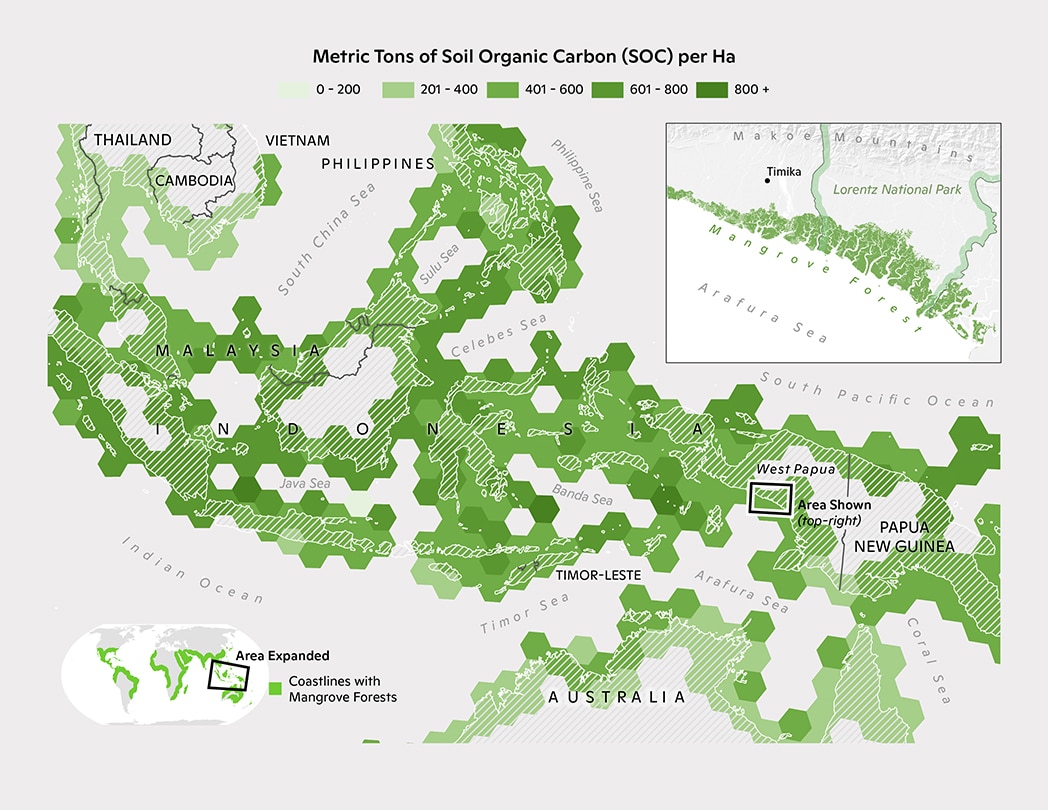
Ecosystems like mangroves or peatlands offer opportunities to make big emissions reductions over relatively small areas. Mangrove forests store vastly more carbon per hectare than most terrestrial forests—primarily due to large soil carbon stores—and only occupy thin strips of coastline across much of the tropics.
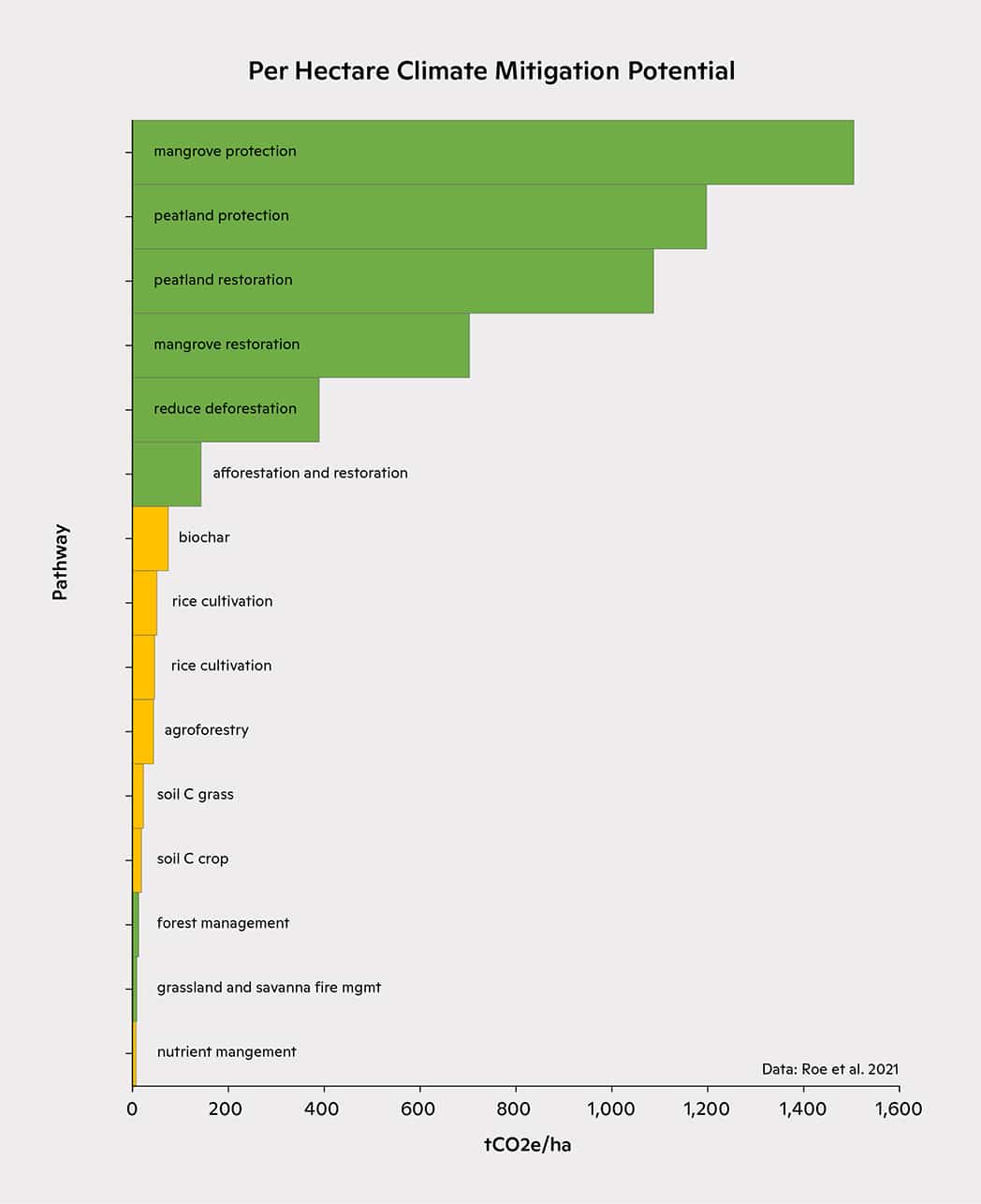
Their outsize carbon sequestration and storage potential means that restoring them offers a much greater return on investment than other ecosystems, and failing to protect them could place climate goals in serious jeopardy. Though employing all land-based mitigation strategies at our disposal is crucial, targeting the most carbon-rich forests could be a quicker, easier, more cost-effective first step.
Giving carbon a home on the range
Adapting ranching practices in the US could increase carbon sequestered in the American West
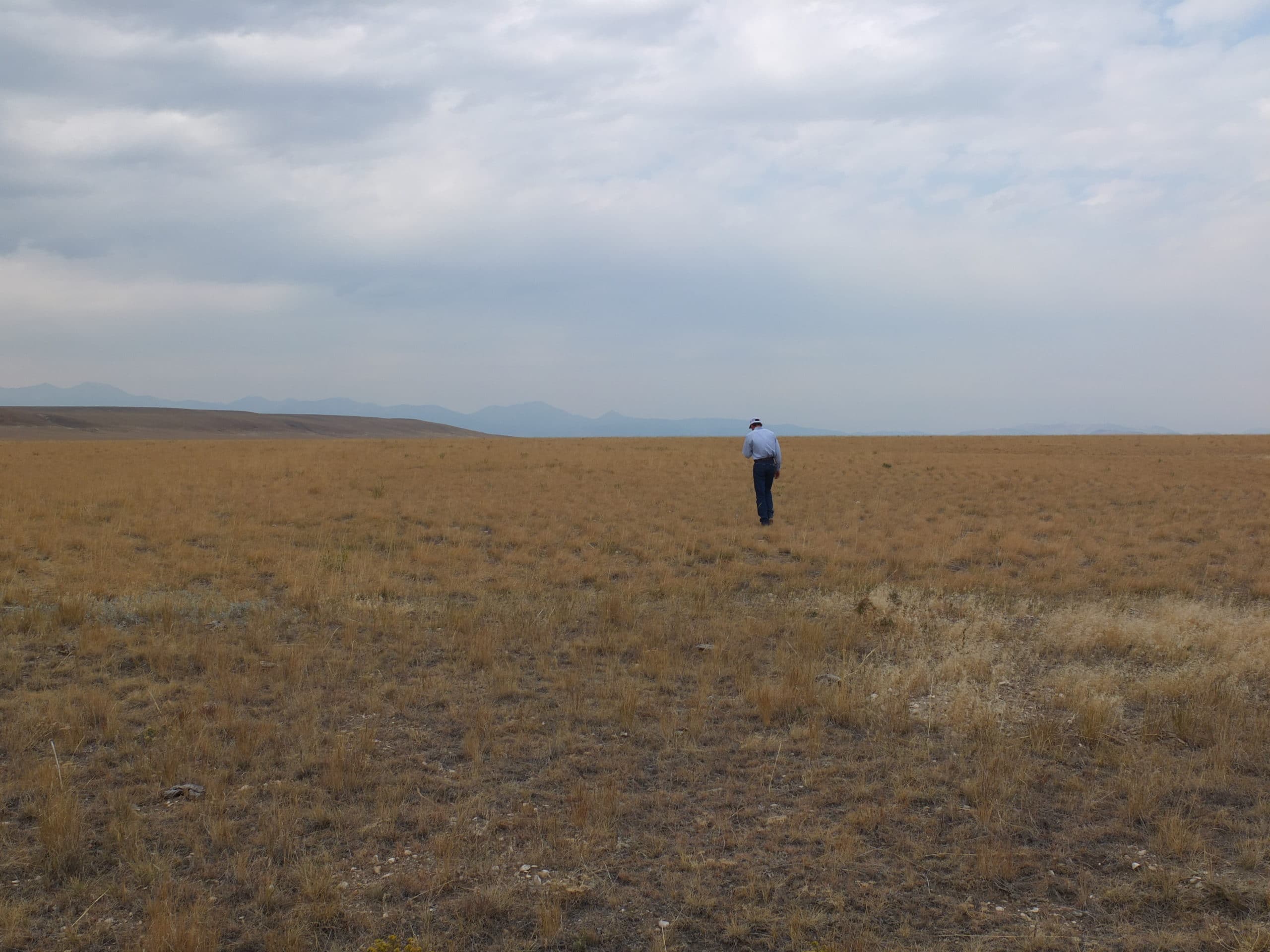
Rangelands occupy more than three quarters of global agricultural land. Many of the world’s native grassland ecosystems have been converted to grazing land for livestock, altering their ecology and changing the flow of carbon on the landscape. However, these lands still have the potential to be a powerful carbon sink if properly managed.
On September 27 and 28, Woodwell Climate Research Center convened a workshop in collaboration with Montana State University (MSU) and Turner Ranches to open discussions on rangeland management in the United States. The workshop took place in Bozeman, Montana, and brought together scientists, ranchers, and conservationists to share their perspectives on rangeland ecology, carbon sequestration, fire management, and herd health, as well as anecdotes from careers spent on the range.
“Montana offers a great location for this conversation because the majority of the state is amazing rangeland including unique grassland and sagebrush steppe environments, in many cases privately held,” said Dr. Stephanie Ewing, an Associate Professor at MSU who co-organized the event. “And because we have a strong academic and extension community at MSU that has been engaged with rangelands and rangeland managers over time.”
Day one began with a series of presentations and panels meant to facilitate discussion about rangeland management. Sessions covered rangeland ecosystem services, rangelands in the American West, management for carbon sequestration, carbon markets, and tools for rangeland monitoring.
For Dr. Jennifer Watts, Woodwell Assistant Scientist, the discussions highlighted the vast untapped potential of rangelands to play a positive part in climate mitigation.
“There’s so much rangeland in the western U.S. and so there is a huge potential for improving ecosystems and improving carbon sequestration and storage,” Dr. Watts said. “But the public doesn’t perceive rangelands with the same reverence that we do with forests or other ecosystems. I think if we start to value them at the national level, and realize the potential for ecosystem services and climate mitigation, that could shape how policy is going to move forward.”
The following day, attendees made site visits to two ranches in the area—Red Bluff Ranch, run by MSU, and Green Ranch, owned by Turner Enterprises—for a hands-on look at the topics they had discussed the day before. They examined soil pits, dug into the grass, and talked about different land management styles.
For Senior Scientist Dr. Jonathan Sanderman, the trip into the field was a catalytic moment in the workshop.
“After just a few hours on the ranches, I felt like a lot of people had lightbulbs go off about how long-term management has affected certain parts of land more than others, and how that feeds back to the soils,” Dr. Sanderman said.
One theme that emerged from the workshop was the need for more and better information on how rangelands could be included in carbon markets. While there was interest from landholders in participating, very few knew enough to get started. Drs. Watts and Sanderman hope future collaborations will allow them to dig deeper into the topic with ranchers.
“A well-functioning carbon market can provide climate benefits and an additional revenue stream, enhancing the economic resilience of ranching communities,” Dr. Sanderman said. “Quantifying and monetizing carbon sequestration from improved grazing management is still in its infancy. This means there is a lot of confusion and few agreed upon standards; but, it is also an opportunity to shape policies and design programs that benefit people and the environment.”
It also became evident that, while many ranchers were interested in carbon storage on their lands, what mattered more to them was the possibility of integrated benefits from holistic range management. Improving carbon storage in the soils can improve water management, nutrient retention, and other ecosystem services.
“Carbon is something that brings it all together,” Dr. Watts said.




